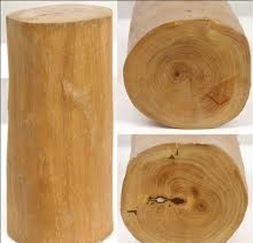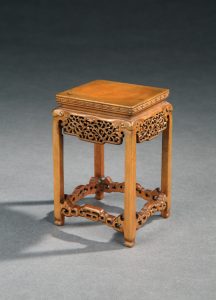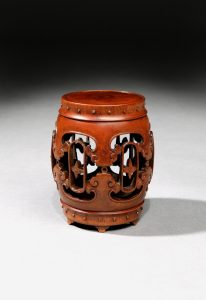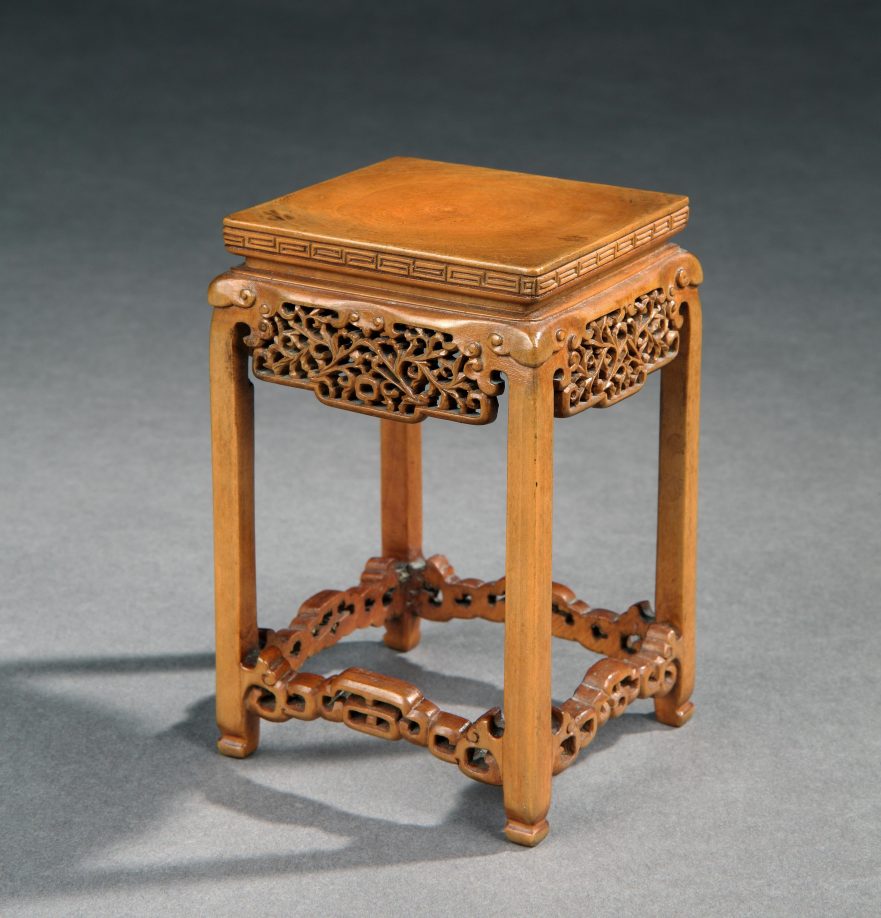Chinese boxwood carving is a handicraft technique originated in the Zhejiang area of China. Those trees are known to be slow-growing evergreen shrubs, with their diameter reaching only around 15 centimetres after forty to fifty years, resulting in an ancient Chinese saying “Box plants take more than a thousand year to grow up.” It is also recorded in the Compendium of Materia Medica that: “The primary disposition of Box plants pertains to their slow growth rate; every year they gain less than three centimetres, and during the leap year they even grow shorter.” On the other hand, their smooth and dense texture, fine veins and proper colour render them incredible materials for traditional wood carvings.

The colour of the grain resembles that of ivory, and it gets darker with time. Boxwood carvings are produced primarily in the areas of Zhejiang, Fujian, Shanghai Jiangsu etc., among which Yueqing in the city of Wenzhou is the main source of manufacture; its carving, along with the wood carving of the city of Dongyang as well as the stone carving of Qingtian County, are together known as the ‘Three Carvings of Zhejiang’. The origin of Boxwood carving remains unclear; the earliest material proof currently in existence is the carving of Iron Crutch Li made during the second year of the Zhizheng Era (1342 CE) of the Yuan dynasty, stored in the Palace Museum, Beijing. Boxwood carving began to become prominent during the Ming and Qing Dynasties, and gradually developed into individual free-standing artworks.Their main subjects range from characters in folktales to those in classical Buddhist scriptures, including the Eight Immortals, the Old Man of the South Pole, Guan Yu, Maitreya and Avalokittesvara etc.

Boxwood carvings from the late period began to be made in combination or group forms. Their appearances are influenced stylistically by literati paintings, exhibiting fine carved lines and consummate blade crafting. The famous folk carving master, Zhu Zichang (1876 – 1934 CE) inherited and refined the boxwood carving technology; his works such as ‘Hide-and-Seek’, ‘Ji Gong’ had won awards in various national and international contests. The Boxwood Carving embodies the essence of traditional Chinese handicraft. In recent years, wood source for the Yueqing Boxwood carving has been decreasing, and meanwhile we also witness a steady drop in the specialized craftsmanship. The heritage and propagation of this technique is therefore barred to a great extent, and as a result remaining intact boxwood carvings also become more precious.

黃楊木雕是來自于中國浙江地區的民間雕刻藝術。黄杨木生长缓慢,四五十年樹齡的黃楊直徑僅達15釐米左右,故古语有云:“千年难长黄杨木”;据《本草纲目》记载:“黄杨性难长,岁仅长一寸,遇闰则反退”。然其光潔緊實的木質,細膩的紋理及莊重的色澤,使得黃楊木成爲傳統木雕不可多得的材料之一。
黃楊木色黃如象牙,年代愈久色澤愈深。黃楊木雕产于浙江、福建、上海、江苏等地,其中温州市乐清市是黄杨木雕的主要產地,乐清黄杨木雕和东阳木雕、青田石雕,并称为”浙江三雕”。其起源眾傢紛說,而現存最早的實物證明為元代至正二年(1342年)的“李鉄拐像”,現存北京故宮博物院。黃楊木雕于明、清時期開始流行,逐漸發展為單獨的圓雕工藝品。其内容題材主要包括民間故事傳説與佛教經典中的人物神佛, 如八仙、壽星、關公、彌勒、觀音等。晚期的黃楊木雕由單體雕發展為拼雕、群雕等,其外觀逐漸受到文人劃風格的影響,綫條細密流暢,刀法圓潤。民間著名的黃楊木雕刻大師朱子常(1876-1934)傳承並改進了黃楊木雕技巧,他的作品“捉迷藏”,“濟公”等曾在各種國内外賽會獲獎,為黃楊木雕的傳播做出極大的貢獻。
黃楊木雕充分体現了中國傳統手工藝的智慧。近幾年乐清黄杨木雕的材料来源出现危机,同时专业人员流失严重。這使得黃楊木雕的雕刻技藝發展與傳播受到限制。這也使得現存完好無損的黃楊木雕更爲彌足珍貴。

